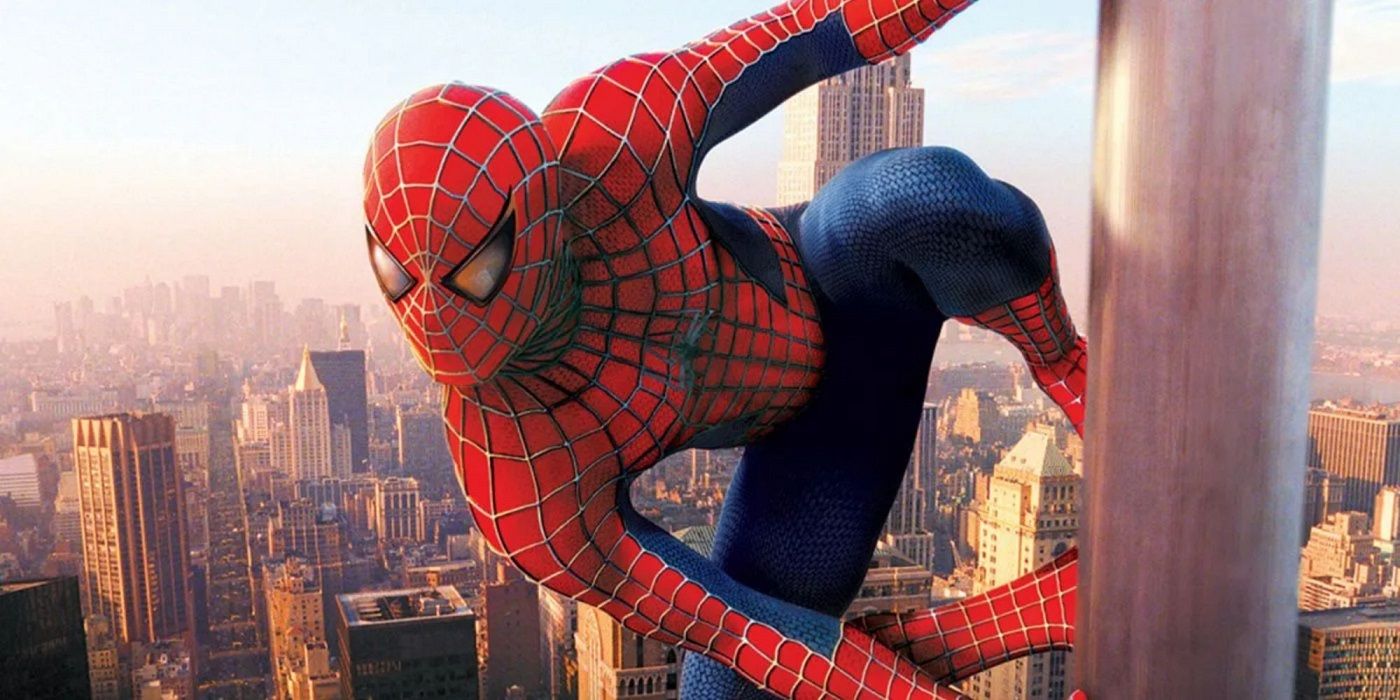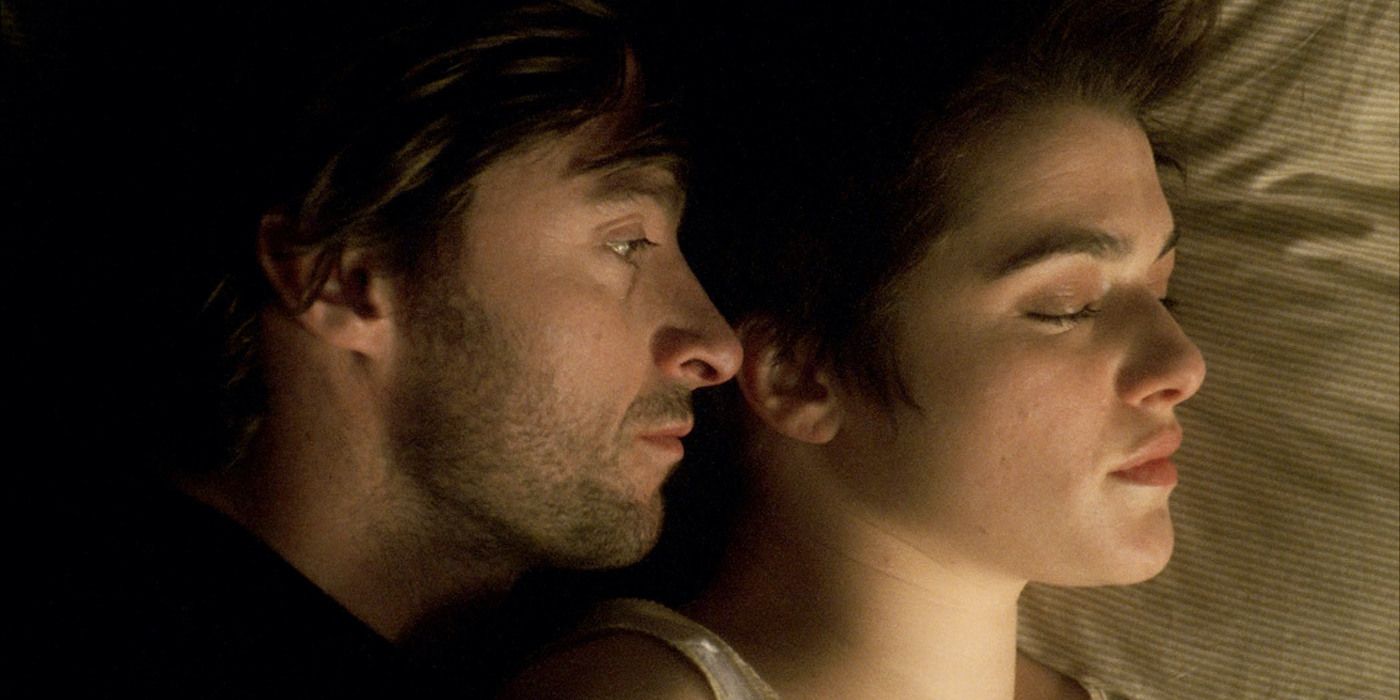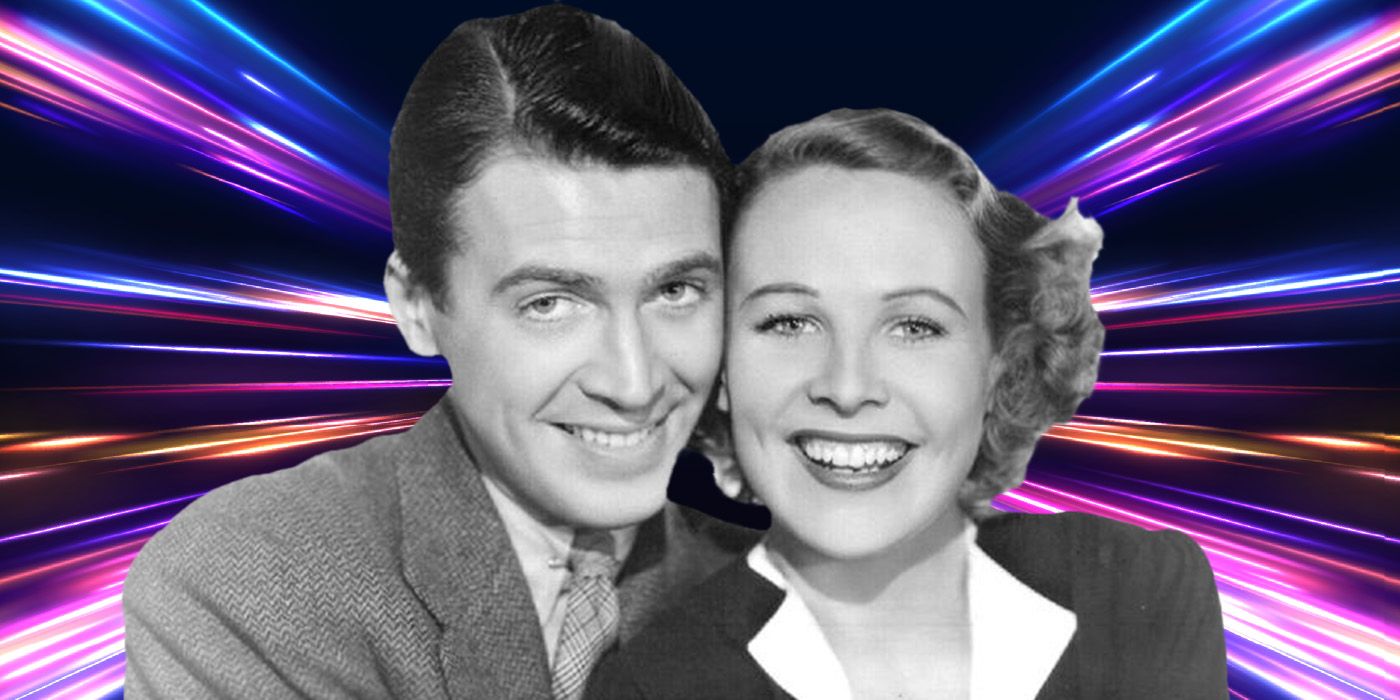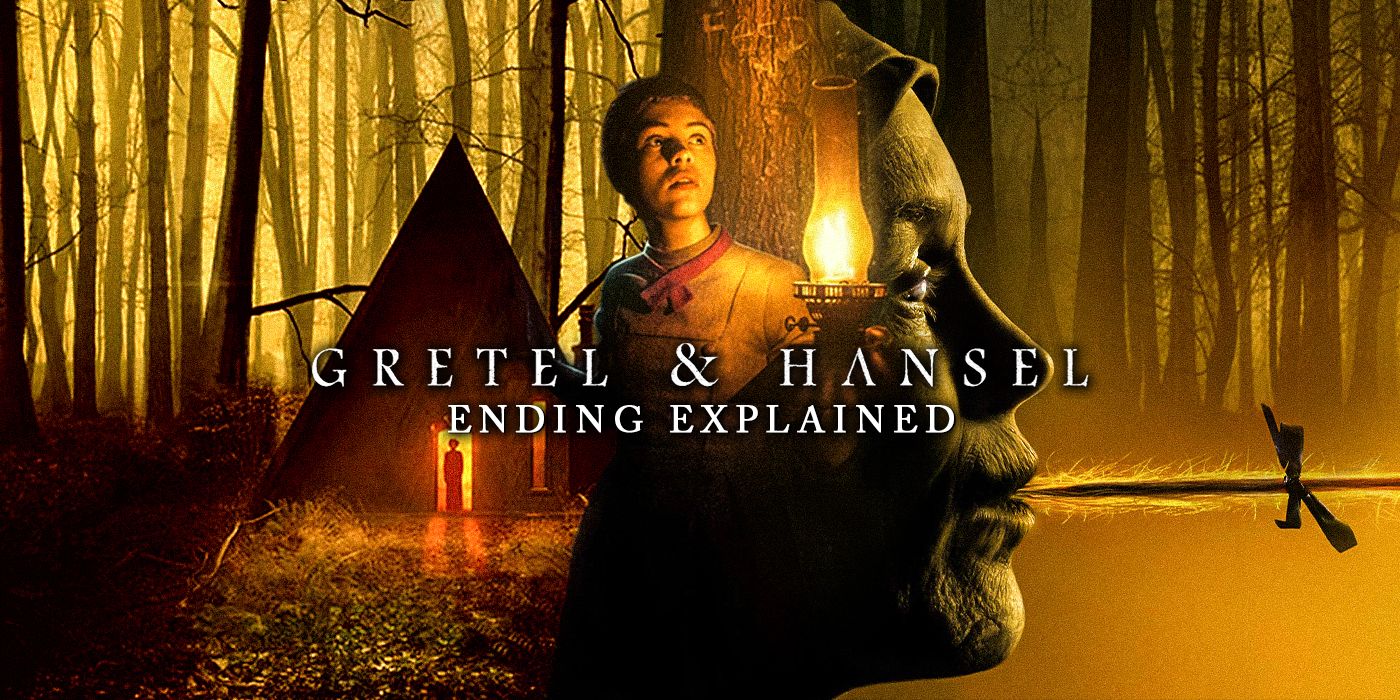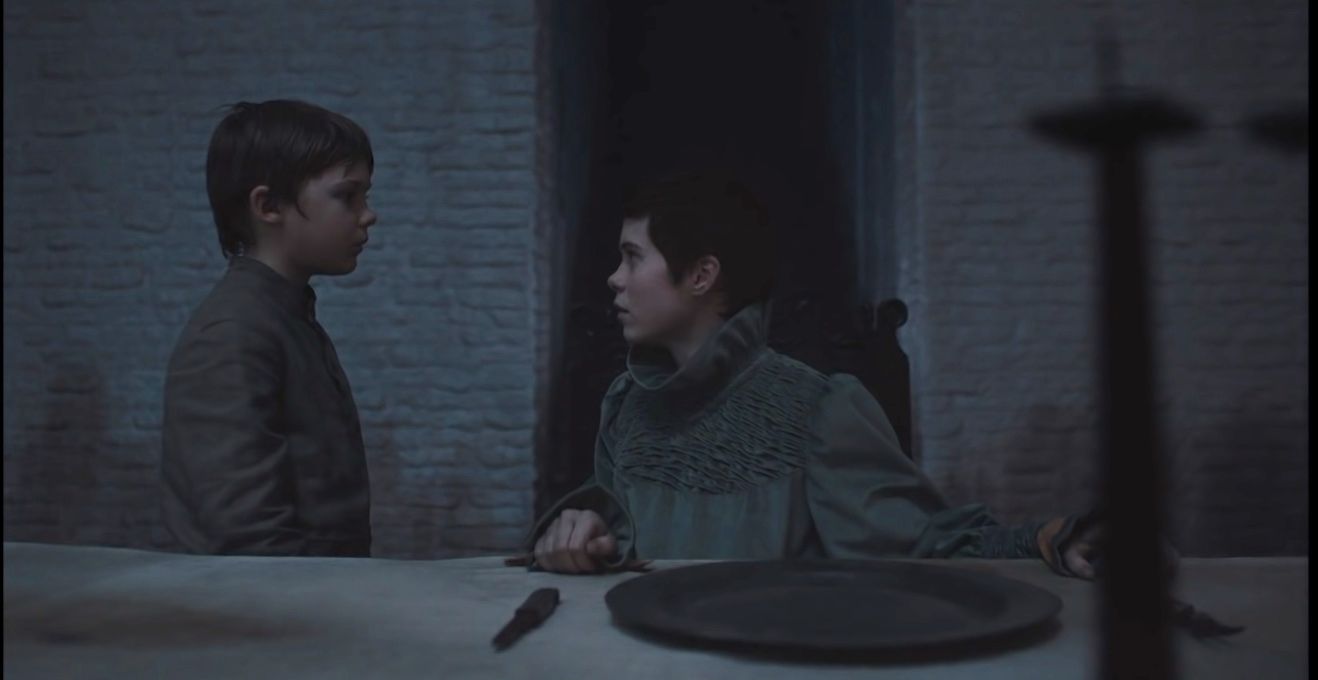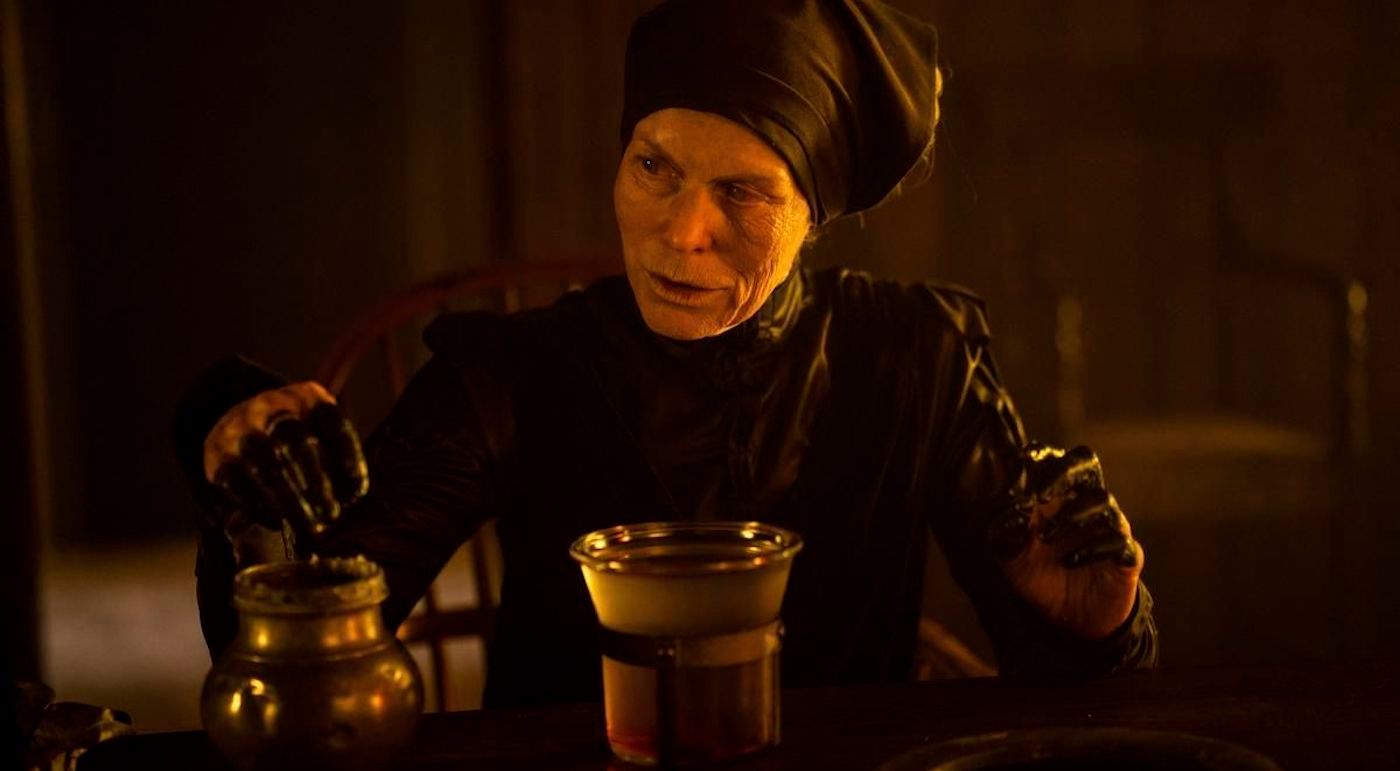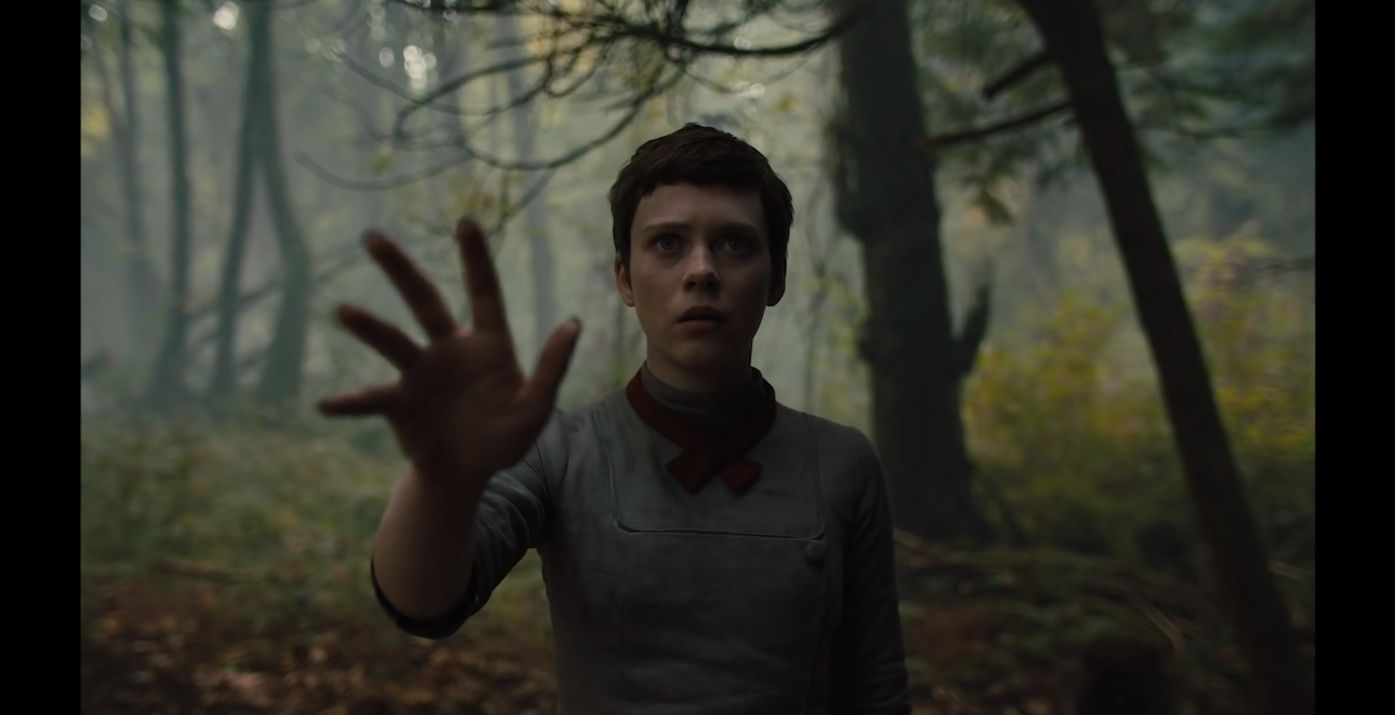“Hansel and Gretel” has been re-told hundreds of times in a variety of formats, from oral folktale to print text to film. Traditional fairy tales are often brushed off because of their misogynistic portrayal of women, their oversimplified themes, and their association with children. However, through manipulation of the source story’s ending, as well as plot points leading up to the ending, Gretel & Hansel (2020) offers a transformed tale that demonstrates that just because a film or story centers around children does not mean it is simple. Directed by Oz Perkins and starring Sophia Lillis as Gretel, the film’s ending may seem ambiguous, but it’s actually a thematically complex twist on the traditional story that highlights how our culture has evolved over the centuries by offering contemporary-minded explorations of child development, gender roles and grief.
The film’s innovative ending is made possible by various alterations to the traditional story’s plot and point of view throughout the beginning and middle of the film. Although there is some degree of variance between the numerous traditional versions of this story, Gretel & Hansel departs from the traditional plot more than most adaptations. In traditional versions of the story (mostly published in the nineteenth century or before), Hansel and Gretel live with both their parents, and, like in the film, the family is impoverished. In traditional versions, the mother (or step-mother) and father are at odds about what to do with the children since they cannot afford to feed them. The mother feels that they should abandon the children and feed themselves, whereas the father feels that they should keep the children with them. The mother demands that the father take the children deep into the woods and kill them. He takes them into the woods, but rather than killing them, he simply leaves them there (which, given the age of the children, how deep in the woods they are, and their lack of food, would have essentially been a death sentence anyway).
In the traditional story, the children’s “journey” is to find their way back home; they are not intentionally heading for some other place. The children accidentally come upon the witch’s house, and become imprisoned by her. She fattens them up to eat them, but they ultimately trick and kill her by shoving her into the oven that was meant for them. The children then find their way home to their father’s house. Their mother has died, but no explanation or comment is given about her death. Some readers interpret this as a suggestion that their mother and the witch were the same person. In the traditional story, the children seem to get rid of their mother in order to create a comfortable, happy family with their father. Their journey is circular in that they leave home in order to return home again, perhaps having learned something along the way. The plot alterations, especially the ending, of Gretel & Hansel allow filmmakers to create an entirely different and more complex character arc.
In Gretel & Hansel, the father is dead from the beginning of the film, so the film’s ending has to depart from the traditional ending, allowing for a different set of tensions and dramas to unfold. The children grieve their father because he is dead, but this is a different sort of grief than believing that he has abandoned them in the forest. The mother’s abandonment of her children in the film is absolutely final: she warns Gretel she’ll kill them if they return to their house, and there is no father left alive to stop the mother from doing this, no father for the children to run back to if their mother dies like in the traditional story. The mother has also seemingly resolved to give up on living her own life, ready to die. Gretel and Hansel must face the realities of complete abandonment without the hope of salvaging the relationship with either parent. When they leave their mother’s house, they know they are on their way to adulthood, whether they are ready for it or not. When they leave the witch’s house at the film’s end, returning to their childhood home is not an option; they must each continue onward towards adulthood.
Gretel and Hansel each take separate paths at the end of the film, rather than taking the same path together, like in traditional versions of the story. In this way, the film’s ending also explores individual child development and gender roles, suggesting that these two children have different needs, in part based on their gendered experience. In this film, the two children are individual, complex characters, each with different needs; they are not a unit. Nonetheless, they act as a unit throughout most of the film because Gretel takes responsibility for Hansel’s safety and wellbeing. In this way, the film explores how girls are often pushed to assume a maternal role long before they ever actually become mothers. At the film’s end, Gretel subverts her expected gender role by choosing her own path and setting Hansel free to grow into adulthood on his own.
Gretel still kills the witch at the end of the story, in a similar way to traditional versions: she “pushes” the witch into the fire that was meant to cook Hansel. However, in the film, Gretel uses magic to do this, whereas in traditional versions, Gretel is not magical and she pushes the witch into the fire using her hands. Also, in traditional versions, the witch intends to cook and eat both children, not just Hansel. Prior to the film’s ending, the witch in Gretel & Hansel appears to be grooming Gretel as a witch, with no intention of eating her or doing her harm. The witch recognizes special powers in Gretel (the same powers that Gretel’s actual mother criticized and rejected), teaches Gretel spells, and gives her advice about how to learn and become more powerful. This doesn’t mean that the witch was a purely positive presence for the children in this film: Gretel still has to kill her to save Hansel’s life. However, the witch was not a purely negative presence in the children’s lives, either. She contributes to Gretel’s emotional development and self-esteem by validating that she does have special powers, and that she should not be ashamed of them like her real mother and the surrounding society suggested. The witch also provides both children with food, shelter, and positive social interaction for an extended period of time during the film. Having these physical and emotional needs met may have helped the children out a great deal after having just been abandoned by their mother. It is likely the witch made them feel more accepted and worthy of positive treatment. The witch’s different philosophies about “parenting” compared to Gretel and Hansel’s actual mother echo more contemporary ideas about child development that were not present in when most traditional versions of this story were published.
At the end of the film, thanks in large part to the witch, the children are able to individuate, not only from their mother and from the witch, but from each other as well. Although Gretel does not allow the witch to kill Hansel, Gretel still ultimately takes the witch’s permission to free herself of her brother when the children go their separate ways at the end of the film. After the witch’s death, the children do not crawl back to the house of their younger childhood, nor do they crawl forward together towards some vague and desolate future; they each walkdown separate paths suited to their individual needs and desires. Gretel provides guidance to her brother, and encourages him to resume the path from before and find the foresters. Hansel has an affinity for chopping down trees and would likely flourish in this lifestyle. However, Gretel recognizes that she would not flourish in the same environment as her brother, and that the witch was right in that she ought to pursue her magical powers. Rather than sacrifice her own needs to supervise Hansel’s development, she gives him advice and sends him on his way so that they can both grow to their potential. This ending seems to imply that children should not be nurtured forever, but rather, they need to separate from their families in order to become independent and fulfilled adults. To a degree, Gretel departing from her brother echoes their mother sending them both away at the film’s beginning. However, Gretel sends her brother away out of hope rather than despair.
The ending is somewhat ambiguous because Gretel and Hansel are not shown reaching their destinations, and we are not told exactly how life turns out for each of them. Fairy tale endings often tie up all of the loose ends and explain that a family, a couple, or a kingdom lived happily ever after. This one does not, and it seems like one reason for that is because this film is truly about childhood and adolescence.. It is not confirmed that Gretel and Hansel will succeed in their journeys, but given the resourcefulness they use and the growth they both demonstrate throughout the film, the ending does offer a hopeful (if undefined) gesture towards their futures. Staying centered on the realm of childhood and adolescence, the film ends on a still-childlike note of potential or horizon rather than presenting a definitive, actualized ending. In other words, the ending’s ambiguity seems to have thematic resonance even if ambiguity can be frustrating to viewers.
In other traditional fairy tales similar to “Hansel and Gretel” such as “Vasilisa the Beautiful,” a visit to a witch’s house is often a step that a child (especially a girl) needs to take before she is ready for her initiation into the adult world, especially marriage. The girl might learn household skills like cooking and cleaning, as well as some spiritual wisdom, from the witch. In traditional tales, however, the children return home to their families (or start their own families) after they have gotten what they needed from the witch’s house. In Gretel & Hansel, the children did learn some things from the witch that will be necessary for their adulthood: Hansel practiced sharpening tools and cutting down trees, whereas Gretel learned about herbs and medicines and practiced using her magical powers. However, after the witch’s death, the children will not return to their family: Hansel will join the community of foresters, and Gretel will stay where she is and live as a witch. The ending is bittersweet but not tragic—the children’s parting scene implies that they will miss each other, but they both recognize that this choice is the best path for them both, and they’re willing to let the other one go out of love.
The ending stresses the importance of children taking some control of their own development, and also stresses that different children (or people) have different needs and take different paths, sometimes complicated by their gender. Throughout the film, Gretel expresses disinterest in becoming a nun, a sex worker, or a surrogate mother to Hansel. Instead, she chooses to become a witch. However, we need not assume that Gretel will replace the witch in her evil ways. She has already demonstrated by saving Hansel that she will be a different type of witch.


